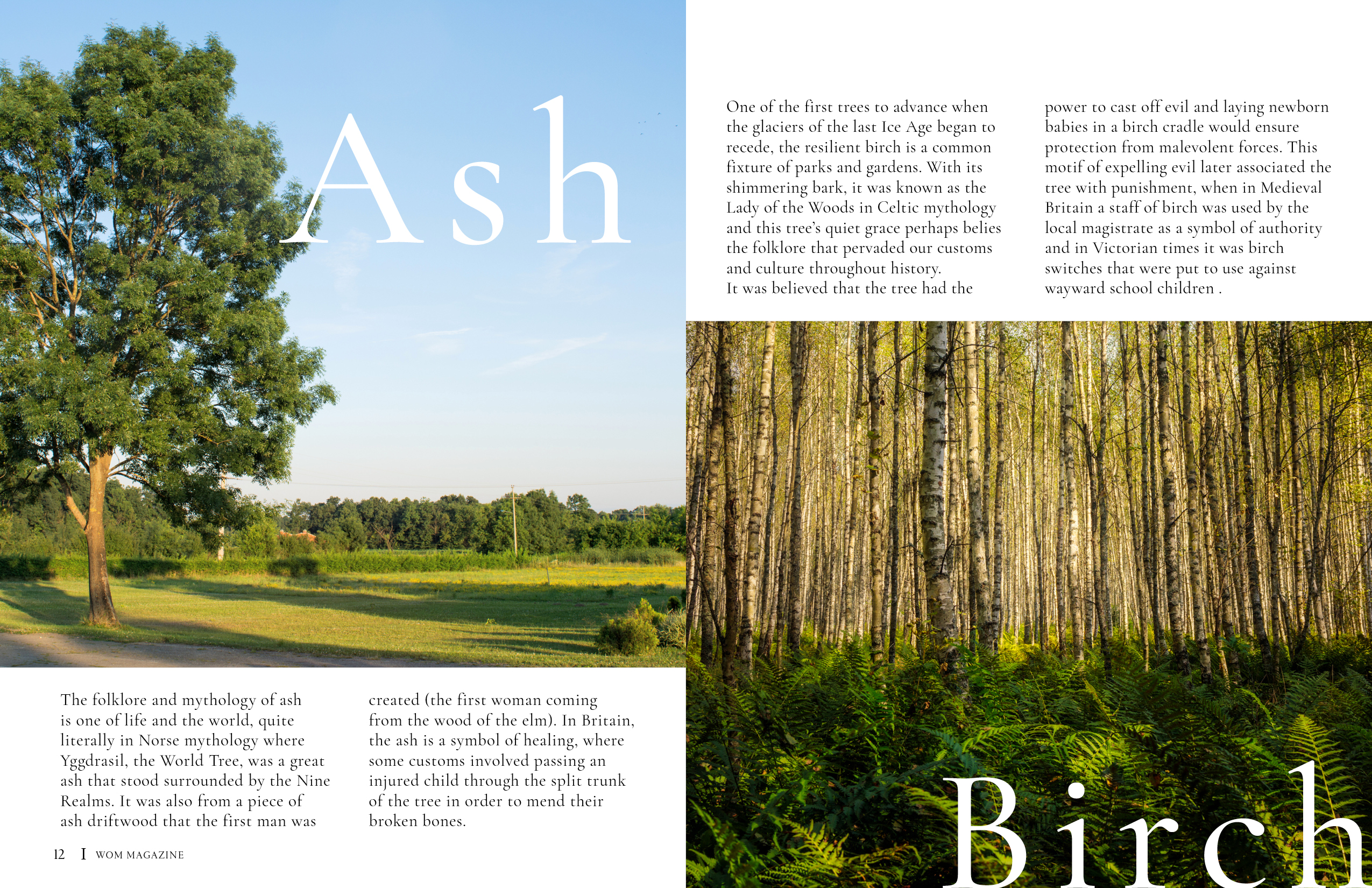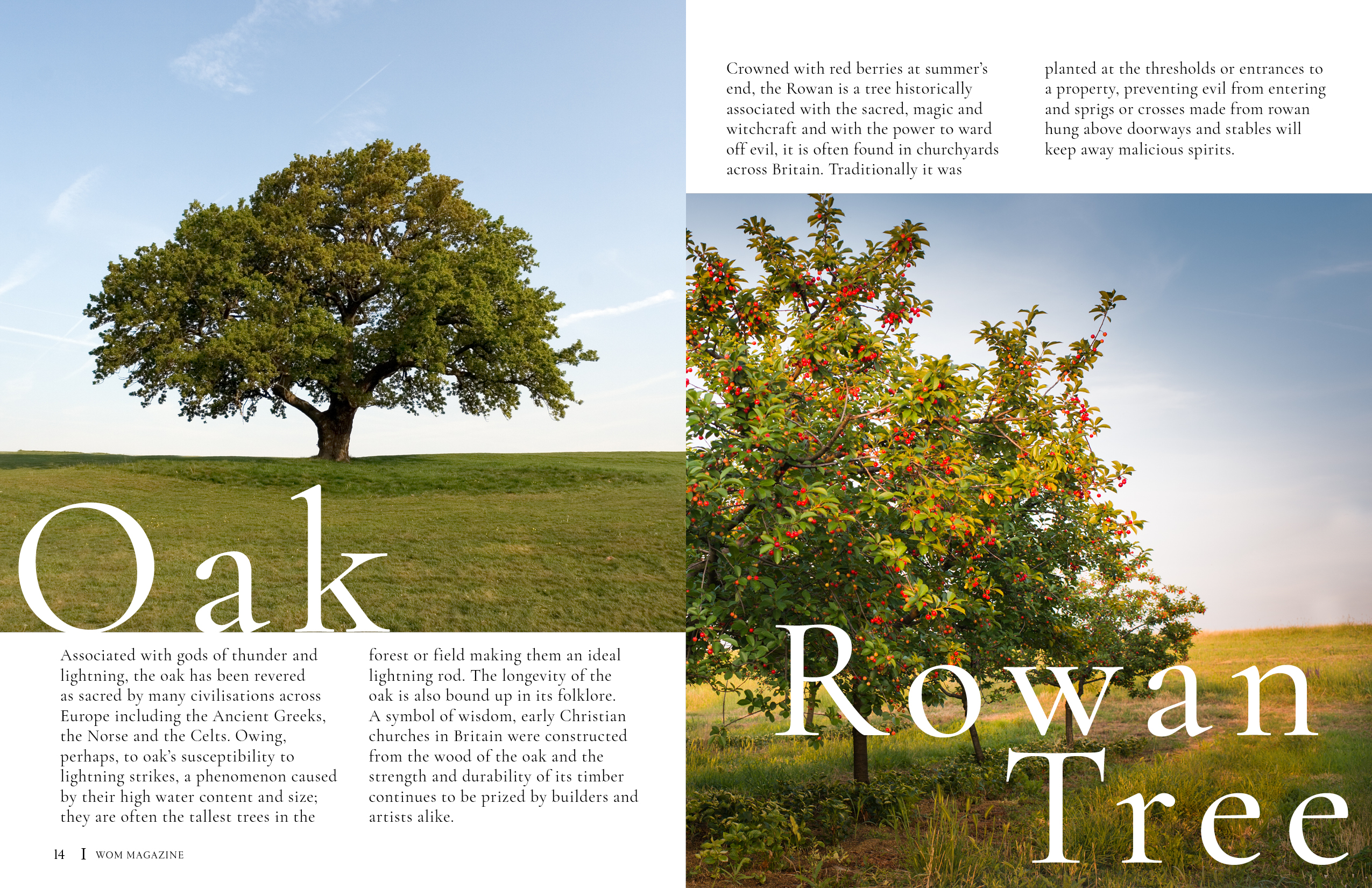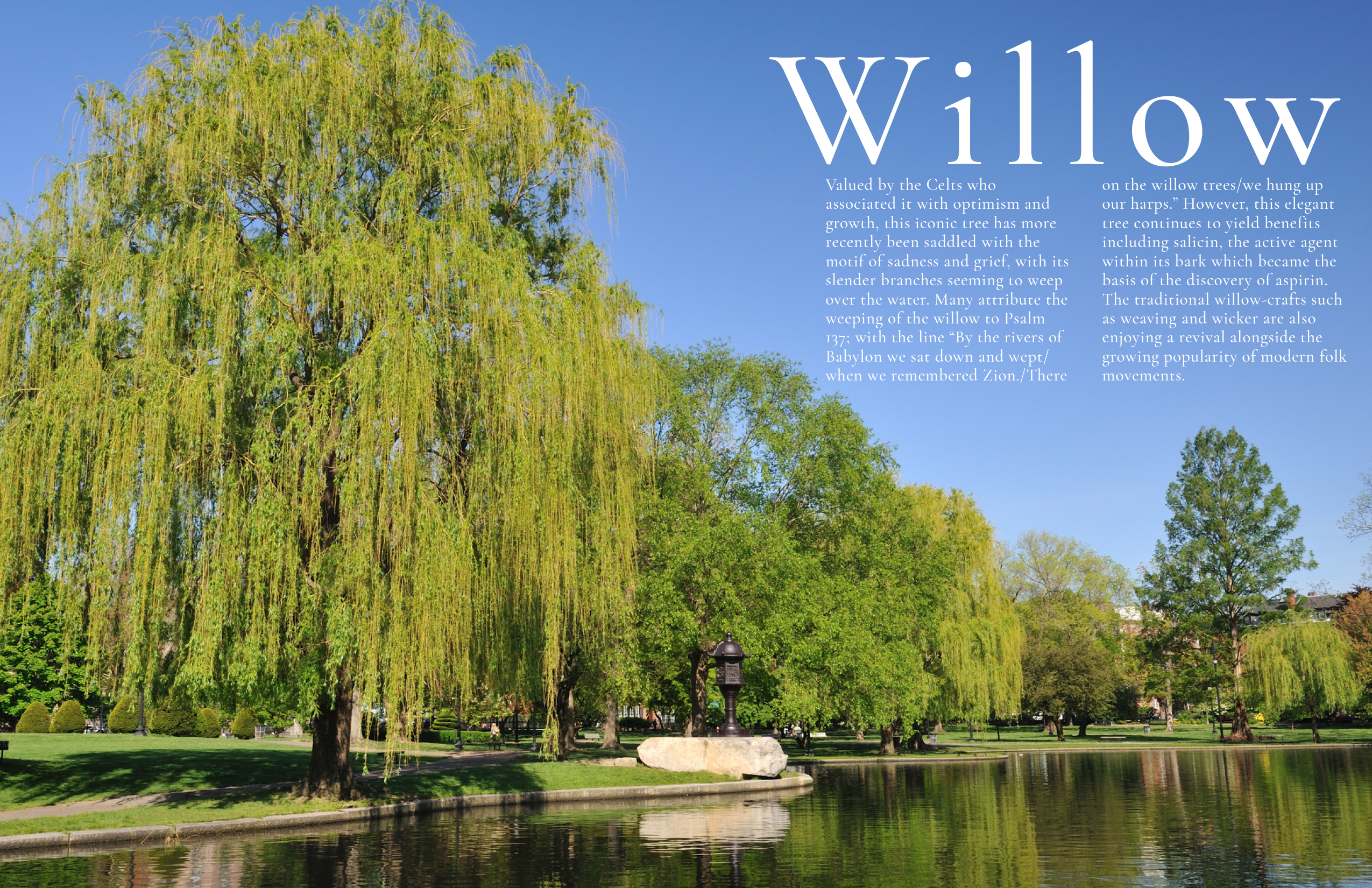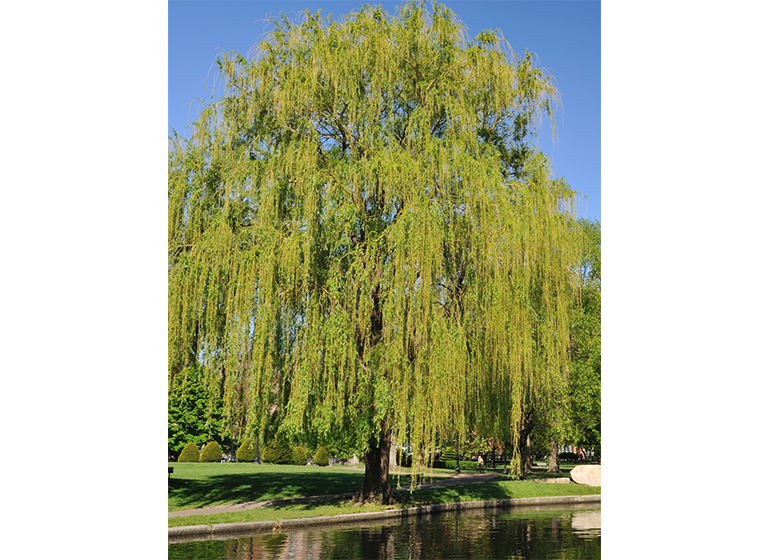
More than convenient fixtures of parks and public spaces casting welcome shade on a sunny day, trees possess rich seams of culture, imbued over time with our obsessive story making and mythologies; edging our tame gardens, and lives, with just a bit of wildness, their roots reaching deeper than the earth, linking some of our most
ordinary customs with ancient folklore.

Ash
The folklore and mythology of ashis one of life and the world, quite literally in Norse mythology where Yggdrasil, the World Tree, was great ash that stood surrounded by the Nine Realms. It was also from a piece of ash driftwood that the first man was created (the first woman coming from the wood of the elm). In Britain, the ash is a symbol of healing, where some customs involved passing an injured child through the split trunk of the tree in order to mend their broken bones.
Birch
One of the first trees to advance when the glaciers of the last Ice Age began to recede, the resilient birch is a common fixture of parks and gardens. With its shimmering bark, it was known as the Lady of the Woods in Celtic mythology and this tree’s quiet grace perhaps belies the folklore that pervaded our customs and culture throughout history. It was believed that the tree had the power to cast off evil and laying newborn babies in a birch cradle would ensure protection from malevolent forces. This motif of expelling evil later associated the tree with punishment, when in Medieval Britain a staff of birch was used by the local magistrate as a symbol of authority
and in Victorian times it was birch switches that were put to use against wayward school children.

Oak
Associated with gods of thunder and lightning, the oak has been revered as sacred by many civilizations across
Europe including the Ancient Greeks, the Norse, and the Celts. Owing, perhaps, to oak’s susceptibility to lightning strikes, a phenomenon caused by their high water content and size; they are often the tallest trees in the forest or field making them an ideal lightning rod. The longevity of the oak is also bound up in its folklore. A symbol of wisdom, early Christian churches in Britain were constructed from the wood of the oak and the strength and durability of its timber continue to be prized by builders and artists alike.
Rowan Tree
Crowned with red berries at summer’s end, the Rowan is a tree historically associated with the sacred, magic, and
witchcraft, and with the power to ward off evil, it is often found in churchyards across Britain. Traditionally it was planted at the thresholds or entrances to a property, preventing evil from entering and sprigs or crosses made from rowan hung above doorways and stables will keep away malicious spirits.

Willow
Valued by the Celts who associated it with optimism and growth, this iconic tree has more recently been saddled with the motif of sadness and grief, with its slender branches seeming to weep over the water. Many attribute the
weeping of the willow to Psalm 137; with the line “By the rivers of Babylon we sat down and wept/ when we remembered Zion./There on the willow trees/we hung up our harps.” However, this elegant tree continues to yield benefits including salicin, the active agent within its bark which became the basis of the discovery of aspirin.
The traditional willow-crafts such as weaving and wicker are also enjoying a revival alongside the growing popularity of modern folk movements.


